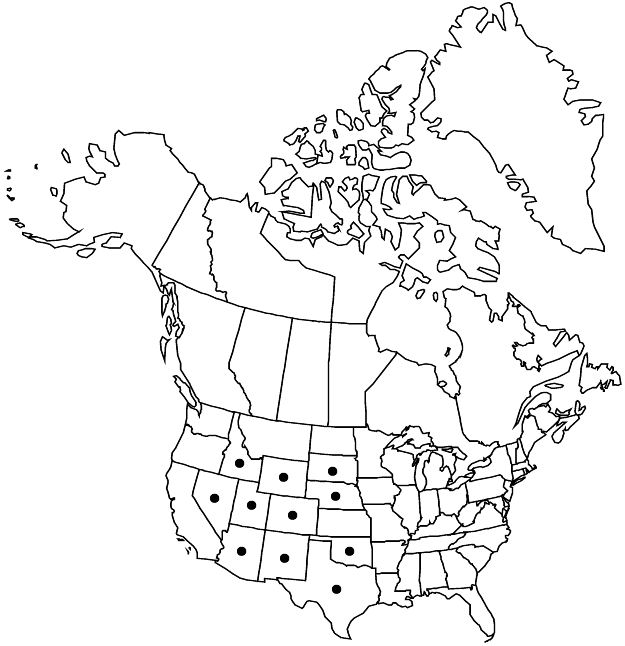Difference between revisions of "Cercocarpus montanus"
Atlantic J. 1: 146. 1832.
FNA>Volume Importer |
imported>Volume Importer |
||
| (One intermediate revision by the same user not shown) | |||
| Line 69: | Line 69: | ||
|publication year=1832 | |publication year=1832 | ||
|special status= | |special status= | ||
| − | |source xml=https:// | + | |source xml=https://bitbucket.org/aafc-mbb/fna-data-curation/src/2e0870ddd59836b60bcf96646a41e87ea5a5943a/coarse_grained_fna_xml/V9/V9_551.xml |
|subfamily=Rosaceae subfam. Dryadoideae | |subfamily=Rosaceae subfam. Dryadoideae | ||
|tribe=Rosaceae tribe Dryadeae | |tribe=Rosaceae tribe Dryadeae | ||
Latest revision as of 22:57, 5 November 2020
Shrubs, 10–20(–50) dm, moderately branched, young stems, leaves, pedicels, and hypanthia sericeous or pilose-hirsute (hairs straight or crinkled, 0.7–1.2 mm). Stems: long-shoot internodes 10–25(–45) mm, sericeous to pilose-hirsute, soon glabrate; short shoots 2–25(–90) × 1.7–3 mm. Leaves winter-deciduous; stipules 1.8–3.5 mm; petiole (1.5–)2–5(–9) mm; blade ovate to broadly ovate, obovate to narrowly oblong-obovate, or oblanceolate, (6.5–)10–30(–63) × (6.5–)8–20(–29) mm, ± subcoriaceous (not stiff), base narrowly cuneate to rounded, margins rarely ± revolute proximally, dentate to crenate or serrate, teeth usually with convex margins, apex rounded, abaxial surface sericeous or pilose on veins and veinlets, areoles canescent, adaxial sericeous, pilose, or villous. Flowers 1–3(–5) per short shoot; hypanthial tubes sericeous or villous to pilose; hypanthial cups 3–4 × 3–5 mm; sepals 5, oblong, 1(–2) mm, acute; stamens 25–45, anthers 0.8–1.2 mm, hirsute. Achenes 9.2–11 × 1.7–2.2 mm; fruiting pedicels (2.3–)3–9(–11) mm; hypanthial tubes (7–)8–12(–14) mm; pedicel/tube ratio 25–70(–98)%; fruit awns 4.5–6(–8.2) cm, proximal setae 2–2.5(–3) mm.
Phenology: Flowering May–Jun.
Habitat: Ridges, rocky slopes, valley floors, sandstone, granite, limestone (Texas), grasslands, juniper-oak, pinyon-juniper, yellow pine woodlands, aspen, pine-fir forests
Elevation: (800–)1200–2600(–3000) m
Distribution

Ariz., Colo., Idaho, Nebr., Nev., N.Mex., Okla., S.Dak., Tex., Utah, Wyo., Mexico (Coahuila).
Discussion
Cercocarpus montanus is winter-deciduous, with thin, usually ovate to obovate, strongly toothed leaf blades and teeth usually with convex margins. Later-formed leaves in some plants may be more narrowly obovate and tend to be more serrate. Vestiture ranges from sericeous or pilose to villous with straight, twisted, or variously crinkled hairs within populations.
Plants of Cercocarpus montanus in northwestern Texas and adjacent northeastern New Mexico tend to have narrowly obovoid, oblanceolate, narrowly cuneate-based, serrate-margined leaf blades, usually with sericeous surfaces and the tightly coiled hairs of abaxial areoles often extending well beyond the areole margins. Their long-shoot leaves are often relatively large. While distinctive at the extreme, areole vestiture differences are most often minor and difficult to evaluate, and leaf-shape differences are not diagnostic in that some other western Texas individuals have ovate leaves, and plants with oblanceolate leaves occur well within the range of C. montanus. These populations have been recognized as C. argenteus or C. montanus var. argenteus.
Putative hybrids between Cercocarpus montanus and C. ledifolius var. intermontanus have persistent, elliptic to narrowly obovate leaves, 20–30(–50) × (5–)8–12(–16) mm, strongly coriaceous, with revolute margins, and appressed or ascending hairs to 0.5 mm on abaxial veins and adaxial surfaces; they are sharply serrate in the distal 1/2–1/5, with mid and secondary veins raised on the abaxial surfaces and well impressed on the adaxial ones. These appear to be F1 hybrids that may form wherever both parent taxa are present; they appear not to be reproductively viable.
Selected References
None.